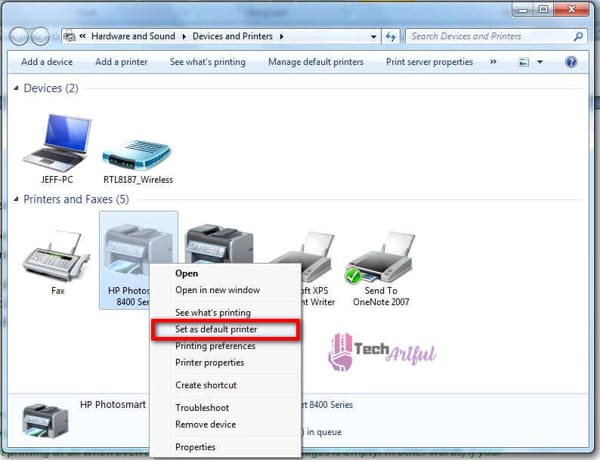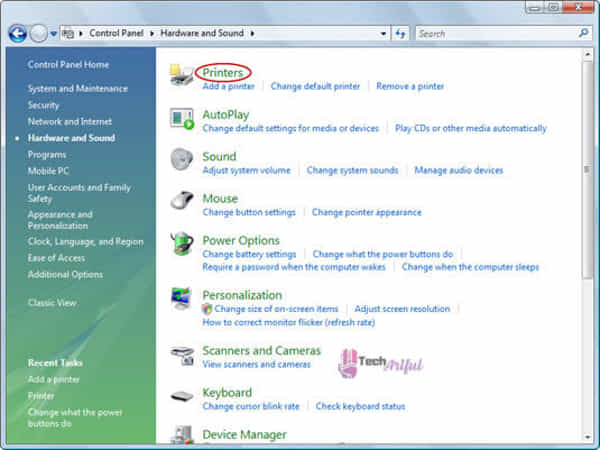Remote desktop printing appears to be more of a hassle than it is worth regularly. There are numerous advantages to working in remote desktop protocol (RDP) environments. For example, a more compact infrastructure, better flexibility, and centralized management are all advantages.
At the same time, the benefits of RDP settings come with several significant obstacles when it comes to RDP printing. Given that RDP is heavily reliant on the WAN connection, particularly in remote locations, the WAN becomes an increasingly vulnerable point of failure. A bottleneck or complete failure of the WAN due to excessive network traffic might impair or completely disrupt RDP functionality, resulting in unpleasant and unexpected downtime for the organization.
RDP printing is no exception, as it is susceptible to the same faults as other types of printing. Indeed, remote desktop printing (RDP) is a substantial source of WAN congestion. However, in small scenarios, it is not only the WAN connection that causes issues. It is also the Internet connection. RDP printing typically uses printer redirection as the primary deployment option, and there have been numerous reports of remote desktop printer redirection failing to function successfully in the past.
One of the most frequently encountered issues is that printers do not appear in the session when they are supposed to. Before you can begin to investigate the causes of the printer’s absence, it’s essential to understand how RDP printer redirection works in Server 2012. This will allow you to diagnose the issue more effectively.
The server is provided with a list of local printers that have been installed on the remote client’s machine to summarize. Following that, the server creates a print queue for the remote session and starts printing. When an end-user attempts to print from a remote client, the server looks for printer drivers linked with the request.
If everything goes according to plan, the printer is rerouted. In this article, we provide you with some quick and easy solutions to fix this printer not showing in the remote desktop session issue.
Check If The Printer Connection Is Enabled
Before proceeding, double-check your Remote Desktop settings to confirm that the Printers option is chosen in your Remote Desktop configuration.
Verifying that the Printers option is selected on the Remote Desktop Connection screen is accomplished by bringing up the Remote Desktop Connection screen, choosing Local Resources, and then clicking OK.
Check Your Servers Settings
Ensure that the server’s setup does not prevent printers from being shared with other users if the system is running Windows Server. To finish the operation, you must log in to the server and follow the on-screen instructions provided.
Windows 2016 and Windows 2019:
- During the installation of particular versions of Windows Server, Group Policy is responsible for handling the RDP settings.
- MSC is the command that has to be executed.
- It will be possible to select Computer Configuration from the drop-down menu.
- Continue by selecting Administrative Templates from the drop-down menu that appears.
- After that, navigate to Windows Components and choose Remote Desktop Services, followed by Remote Desktop Session Host from the drop-down menu to complete the installation.
- Finally, include the words Printer Redirection in the title of the document.
- When checking the printer settings, it is essential to ensure that the Do not allow client printer redirection option is set to either Not Configured or Disabled.
- There is another option that you may want to explore, which is the Redirect, just the default client printer setting. Changing this policy to Not configured or Disabled will make other printers accessible for usage, which is preferable if you wish to make more than the default printer available for use.
Windows 2012:
- It is necessary to start the Server Manager application.
- Select the Remote Desktop services that will be utilized from the drop-down option that appears.
- In this case, Collections may be found in the drop-down menu.
- Select Tasks from the drop-down menu, and then Edit Properties from the drop-down menu to complete the operation.
- Check to ensure that the Windows Printer option is chosen and enabled on the Client Settings tab of the client configuration.
Windows 2008:
- If you are not sure where to begin, start by clicking on the Start button and then select Administrative Tools, then click Remote Desktop Services, and lastly click on Remote Desktop Session Host Configuration from the drop-down menu that appears.
- Select Properties.
- Then navigate to Client Settings and click on Redirection from the Connections menu selection after making a right-click selection on the connection’s name. If the Windows Printer option is selected in the printer selection, make sure that it is not chosen.
Make Sure That Drivers are Installed and Server
It is vital that you double-check that you have installed on your computer the printer drivers that are required to run the printer to which you are seeking to connect before moving forward with the installation.
Without first installing the printer drivers for the computer to which you are connected, you will not be able to access the printer at all if you do not already have them installed.
Change Computer Configuration
Changing your computer configuration might help fix the error behind the printer not showing in the remote desktop session problem. Follow these steps below to change the computer configuration accordingly:
- Select Computer Configuration as the option from the drop-down menu that appears.
- As seen in the accompanying image, choose Administrative Templates from the drop-down menu, followed by Windows Components, Remote Desktop Services, and, lastly, Remote Desktop Session Host, to complete the installation.
- Once this is done, choose Do not allow client printer redirection or Disable from the drop-down selection that appears. You should also make sure that the following elements are correct:
- In the Desktop Connection or Local Resources Tab, the printers on the local network are routed to the appropriate location based on the setup. Using the option Allow printer redirection, you should be able to enable this functionality on the server.
- The drivers for the distant server have been downloaded and installed on the local computer.
- Access to folder c:windowssystem32spool is granted to all users who have the rights to read, execute, and list the folder’s contents.
- Inspect the RDS server event logs from the moment you signed into RDS to determine what happened.
Configure Windows Remote Desktop Settings
You may be signed in, and the server appears to be working well, but Remote Desktop cannot connect to or display your printer. In this case, check to verify if a remote connection is permitted on the machine. Searching for the option in the start menu and then selecting it from the list of results is the most convenient method of obtaining access to the feature.
Then, from the menu bar, select the Remote option to begin working with the remote. For the Remote Desktop functionality to function correctly, the Remote Desktop service must be configured to accept connections from other machines. You should check if your server has been configured to allow remote control with Network Level Authentication.
If this is the case, check to see if your computer is compatible with this option or choose to accept any connection instead. Remember that when you are in the RDP configurations, you should double-check the list of permitted users by choosing them using the Select Users button or by typing S on your keyboard.
Access to the network is automatically granted to all users who have administrator access to the machine in which the computer is located. This list must include all of the frequent clients who use the service to be considered comprehensive. It is recommended that you add the username you would want to connect to the list of permitted users as a precaution if you attempted to log in using user credentials that did not have admin access.
This will prevent this from happening again in the future. This can fix your issues with the printer not showing in the remote desktop session.
Recheck Windows Firewall
An increasing number of users have voiced concern that the Windows Firewall can be very restrictive at times; for example, the inbound ICMP protocol, which is used to establish ping connections, is by default prohibited, and also it might be the reason why you can not see your printer in a remote desktop session.
It is possible to access the Windows Firewall with Advanced Security by typing firewall into the search box available in the start menu’s search field. Navigate to the Inbound Rules list by hitting R, and then scroll down to the Remote Desktop Rules section by pressing R a second time.
- Remote Desktop (TCP-In) and Remote Desktop – RemoteFX is two rules shown by Windows Server 2008. These are the two rules that Windows Server 2008 should be able to display to users. (TCP-In). Assuming that the server continues to accept RDP connections via the regular TCP port 3389, both of these settings would be enabled in the vast majority of situations.They will be enabled by default if the server continues to accept RDP connections via the standard TCP port 3389. It is possible to have four different Remote Desktop – User Mode rules on a 2012 Windows Server because the rules are divided into Domain and Private or Public profiles and TCP and UDP protocols. All of these rules would typically be enabled in the default configuration on 2012 Windows Servers.
- Enabling ICMP for pinging purposes may be accomplished by setting your firewall setup to enable this functionality. When you look at the rules, you will see that they are labeled File and Printer Sharing (Echo Request – ICMPv4 – In) and v6 for both IP versions and that they are entitled File and Printer Sharing (Echo Request – ICMPv4 – In) (Echo Request – ICMPv4 – In). To see the rules, use the F key (Echo Request – ICMPv4 – In).
It’s frustrating to face such an issue while working and even more so when you do not know the definitive reason. Hopefully, this article has all the solutions you need to fix your issues with the printer not showing in a remote desktop session.
FAQ
How do you add a printer that is not visible?
Answer: Select the View Devices and Printers option in the Control Panel. At the top of the window, click Add Printer. Next, pick Add a local printer or a network printer with manual settings.
Why am I unable to see my printer?
Answer: Ascertain that File and Printer Sharing and Network Discovery are enabled on the printer server or the computer to which the printer is physically attached. If you disable this feature on a printer server, you will quickly discover that no one in the office can access or connect to the server’s printers.



